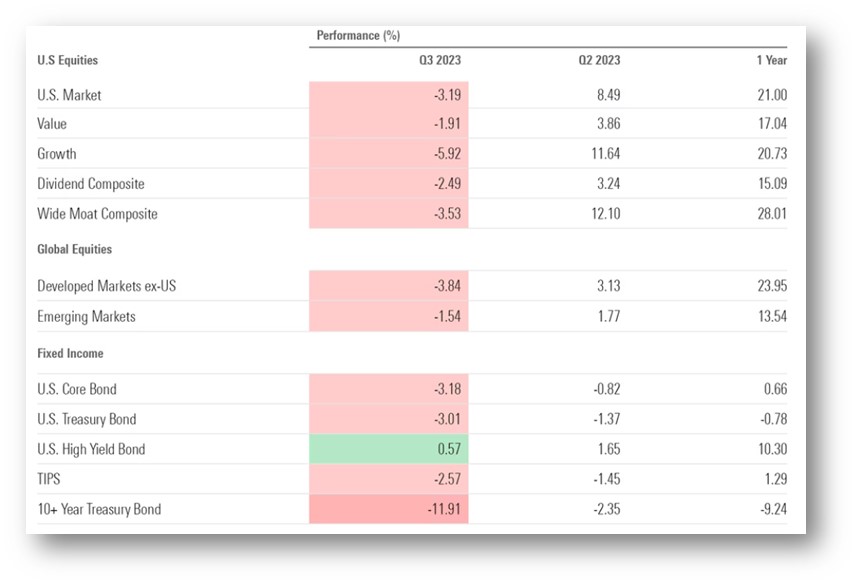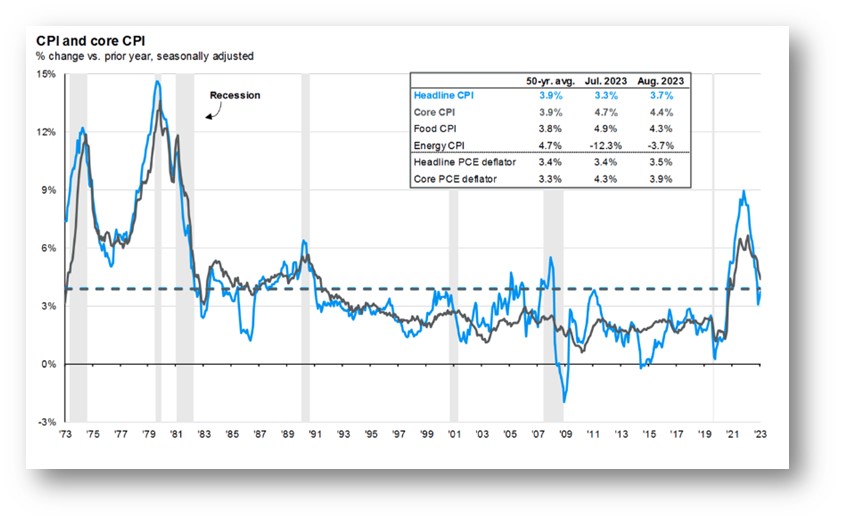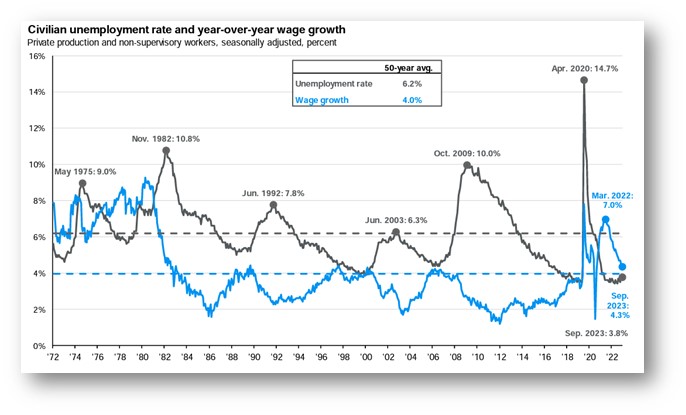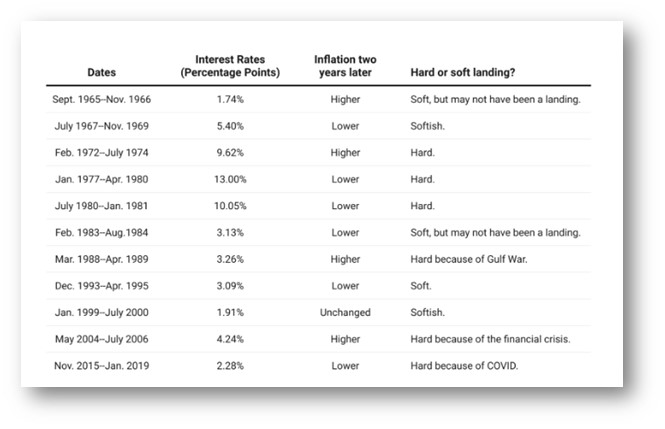As we look back at the third quarter of 2023 and ahead to the fourth, let’s review how various markets fared, and dig into what a potential soft landing for the U.S. economy looks like.
The Federal Reserve and changes in interest rate expectations have been strong drivers of both equity and fixed income returns over the past two years. That dynamic accelerated in the third quarter of 2023. While the Federal Reserve has been saying interest rates will stay higher for longer, financial markets began to fully reflect that reality over the past few months as both short and longer-term interest rates hit new cycle highs. Looking forward, the big debate in financial markets is whether the Federal Reserve will be able to achieve a soft-landing for the U.S. economy or if higher rates for a longer period will ultimately cause a recession.
Equity and Fixed Income Markets
After three consecutive positive quarters, Equity markets saw negative returns. U.S. Growth stocks were down almost -6%, while U.S. Value equities were down just under -2% for the quarter. Both asset classes are up 20% and 17% respectively over the past year, recovering some, but not all the losses experienced in 2022. Both International Developed and Emerging Markets were also down this past quarter but have produced solid returns over the past year. Fixed Income performance continues to struggle due to longer term interest rates recently moving beyond levels last seen in October of 2022. While Core Bonds are modestly positive over the past year, Core Bonds and Intermediate U.S. Treasurys were down over -3% this past quarter, while longer term Treasurys were down over -11% this past quarter.

Soft Landing Versus Recession?
Over the past months, economists have been debating whether the Federal Reserve will be able produce a ‘soft landing’ for the U.S. economy and avoid a near-term recession. What would define a soft-landing and when will we know if one was achieved?
At present, the Federal Reserve is focused on bringing inflation back down to a 2% target, which is the element most needed for a soft landing. Inflation has come down significantly since its June 2022 peak of 8.9%. The most recent CPI reading, while still elevated at 3.7%, has been consistently moving closer to the Federal Reserve’s target range as the below chart shows:

The second requirement needed to achieve a soft landing is to see a slowdown in hiring and wage gains, leading to a modest rise in unemployment. According to Julia Pollak, chief economist at ZipRecruiter, “4% unemployment is a sort of magical dividing line”.(1) With consumer spending making up 68% of the U.S. economy, a slowing job market can help alleviate some inflation pressures, but significantly higher unemployment would be a drag on consumer spending and GDP growth which would most likely lead to an official recession. Along these lines, the below chart is encouraging as it shows employment has modestly risen from a low of 3.6% to 3.8% in September, while wage growth has also slowed from a high of 7% to the latest reading of 4.3%:

Will a Soft Landing Happen (and When Will We Know)?
The above data points show inflation, unemployment and wage growth are all moderating in unison, without a contraction in the overall economy. So, a soft landing is still possible, but how (or when) will we know if this has been achieved?
One way we might know is if the Federal Reserve stops hiking interest rates and acknowledges that inflation has come down to their target without a significant decline in economic activity. In this scenario, growth would slow but not contract.
Another definition of a soft landing according to Alan Blinder, former Fed vice chair and current economist at Princeton, is if GDP declines by less than 1%, one year after the Fed stops raising rates, AND the National Bureau of Economic Research (NBER) does not declare a recession during this time.(2) The below chart shows that by this definition, the Federal Reserve has been successful in slowing economic growth by increasing interest rates without a recession multiple times over the past 60 years. Specifically, five of the last 11 interest rate hiking cycles have resulted in soft landings and six resulted in recession:

Coin Toss
The job market, equity market and overall economy have all been resilient this year despite a significant increase in interest rates. And while it remains to be seen whether the Federal Reserve will achieve a soft landing with this latest interest rate hiking cycle, recession expectations were much higher at the beginning of 2023 than they are today.
According to an August 2023 survey by the National Association for Business Economics, 69% of economists surveyed were somewhat to very confident a “soft landing” will be achieved which is a significant increase from the 30% who answered similarly in March of this year. If a soft landing does indeed come to pass, as this survey suggests, Fed officials will have been able to slow the economy without a recession 50% of the time over the past 12 cycles, which is basically a coin toss.
Questions?
If you have questions or would like more discussion about your long-term investments, please reach out to our financial planning team. We’re happy to help.
Free Financial Planning Day, October 25
If you know someone who might benefit from a 30-minute conversation with a Johnson Bixby Certified Financial Planner™ professional, they can register here for a Zoom or in-person meeting on October 25, free of charge.
Other sources:





























